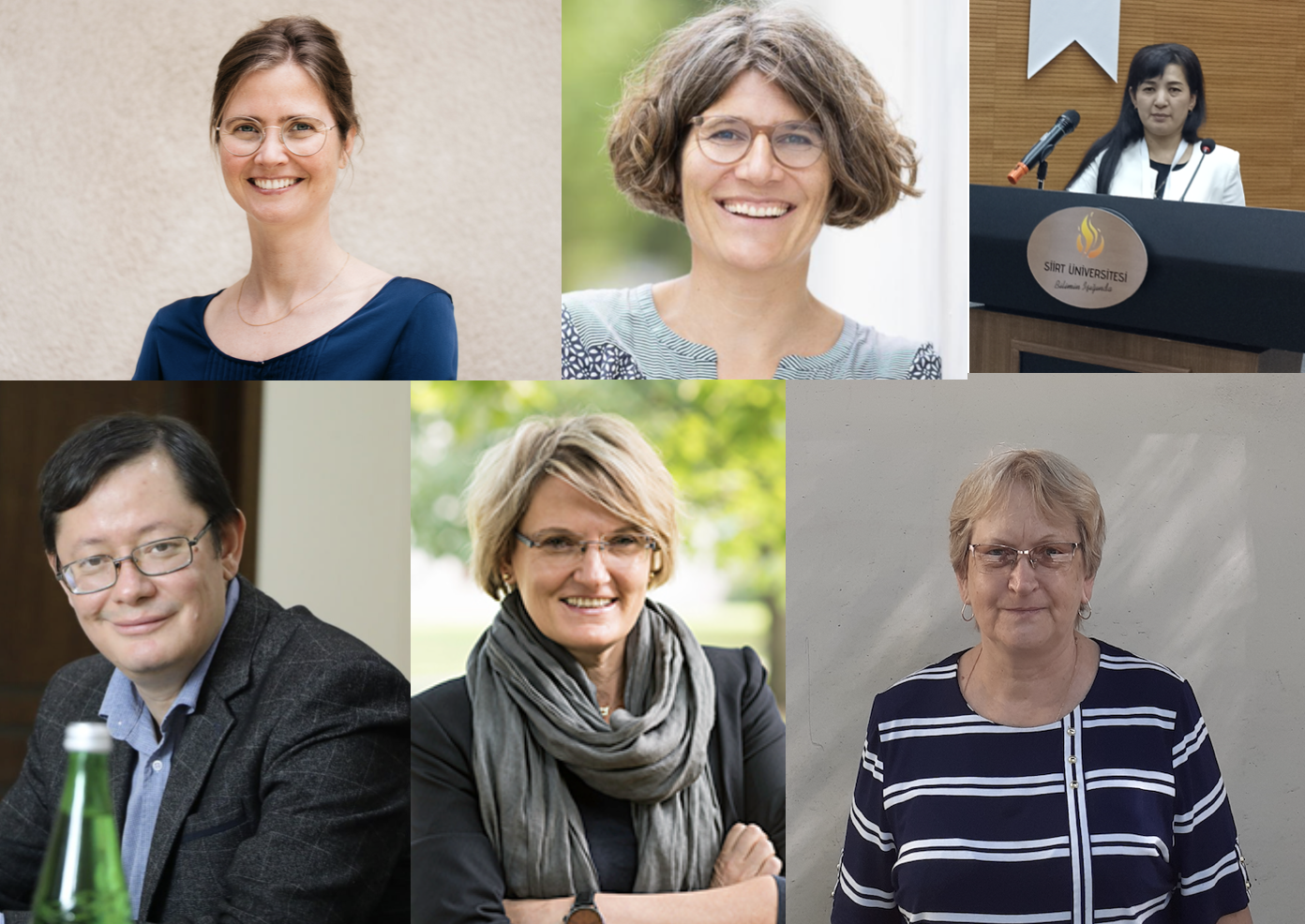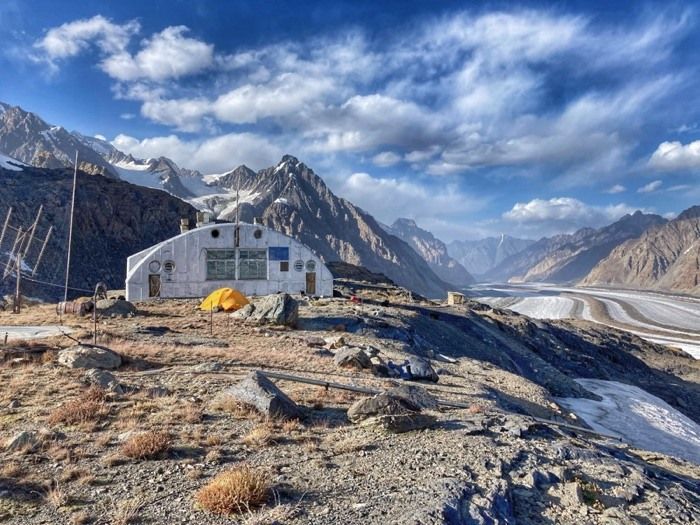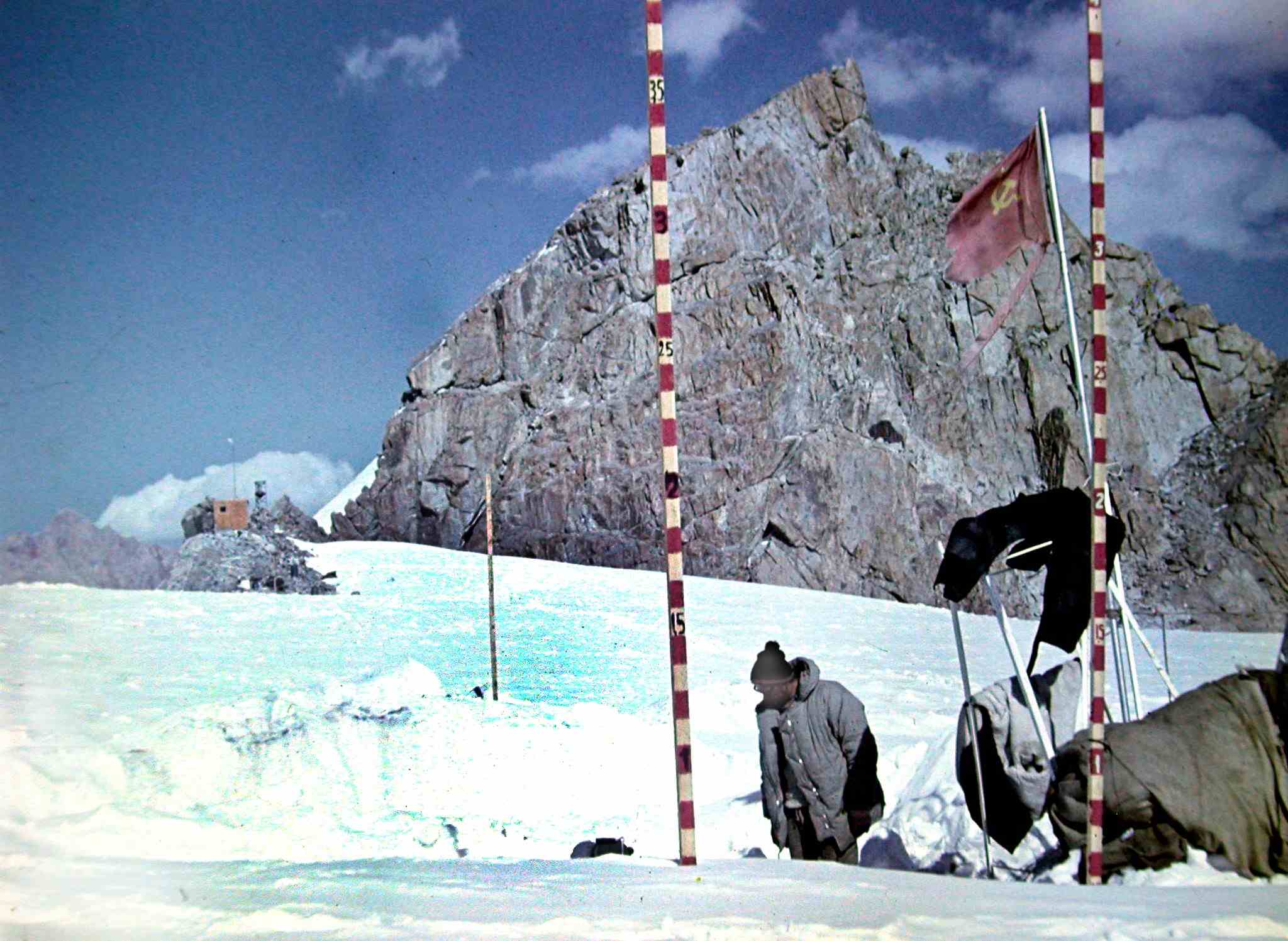Project area
Kyrgyzstan
Environmental History deals with the historicity of human-environment relations. It focuses on the historical constitution of environmental thought, traces the relationship between environmental changes and political constellations over time, analyses how archival and memory practices shape how humans engage with the environment, and explores how the historical contingency of human-environment relations offer entry points for critique and societal change.
Our project examines the role of gender in the history of science in Central Asia. Situated at the peripheries of the Russian Empire and the USSR, the role of gender in Central Asian scientific communities was particularly complex and multi-layered. In SEQUAL, we investigate the case of field science, i.e., scientific disciplines and research methods that involve the collection and study of data directly in natural environments, rather than in controlled laboratory settings, such as glaciology, meteorology, geology, and geography. We argue that the analysis of field science is of particular relevance to our aim of understanding gender dynamics in scientific communities in Central Asia, as historically field sciences have been and remain dominated by men and framed through masculine discourse and practice. The remoteness and inaccessibility of the mountain areas as the field where the Central Asian scientists worked framed field sciences as a challenging endeavour requiring skills and abilities coded as masculine. This coding of field sciences as masculine provides the rationale for this project via two entry points. First, despite this clear coding, male identities of scientists in Central Asia are rarely made visible and examined as gendered in a way the gendered identities of Western scientists have been interrogated by existing scholarship. SEQUAL argues that the particular situation of male scientists in Central Asia as either the subjects of the Russian Empire or citizens of the Soviet Union added important dimensions to their gendered experience of science, which was shaped by the dominant ideological imperatives. Second, we will recover the role of female scientists in a nuanced way. While Central Asia is often seen as a place where gendered dynamics were particularly conservative, our project challenges this narrative and demonstrates that women, mostly of Slavic origin, frequently participated in carrying out work in, and making significant impact on the field sciences. For women, this meant to embrace the traditional discourse of femininity while taking advantage of the state’s ideological commitment to gender equality. Our project brings the two gendered dimensions together as it explores, in a pioneering way, how these separate scientific identities shaped each other through a complex interplay of relationships in the field, where notions of femininity and masculinity constantly shifted, leading to the gendered subjectivity of knowledge.
This project is funded by the SPIRIT programme of the SNF.
Project leaders:
Dr. Katja Doose
Prof. Christine Bichsel
Prof. Oybek Makhmudov (University of Chirchik, Uzbekistan, email: oybek81@yandex.ru)
Dr. Nargiza Kenjaeva (University of Chirchik, Uzbekistan, email: kenjaeva82@inbox.ru )
Partners:
Prof. Tatyana Bakhmetyeva (University of Rochester, email: tatyana.bakhmetyeva@rochester.edu)
Dr. Nina Pimankina (UNESCO Central Asian Glaciology Centre, Almaty (Kazakhstan) email: pimankina@cargc.org)
Prof. Dilarom Alimova (Academy of Science of Uzbekistan, email: Rachbar_D@yandex.ru )

This project examines the history of Soviet glaciology in the Pamir Mountains. It examines how Soviet scientists produced glaciological knowledge through on-site research stations on the case of Fedchenko Glacier. Fedchenko is an iconic glacier, of key importance for the history of glaciology: it is not only one of the largest glaciers in the world, but also was crucial for Soviet glaciological observations in Central Asia since the 1920s. These observations inform ongoing research on mountain glaciers and effects of climate change today, as Fedchenko feeds the Amu Darya, Central Asia’s biggest river and main source for irrigated agriculture.
The first scientific observations of the Fedchenko Glacier resulted from an Imperial Russian expedition in 1878 led by V.F. Oshanin. A joint German-Soviet expedition first mapped Fedchenko in 1928 and subsequent Soviet expeditions continued glaciological, hydrological and meteorological research resulting in the building of a hydrometeorological station at Fedchenko Glacier (4169 m) in 1933. The station was operational for almost 60 years, but abandoned in 1992 due to the Tajikistani civil war. The establishment of the Fedchenko station marked an important shift in the modalities of Soviet glaciological observation in the Pamir: from research expeditions to continuous on-site measurements. However, maintenance and provision of the high-altitude Fedchenko research stations was a huge logistical operation, involving the transport of persons, instruments and supplies first by horses and later by helicopter.
The main objective of this research is to establish the history of Soviet glaciological observations at the Fedchenko Glacier research stations. It thus asks: why and how are Soviet scientific data on Fedchenko Glacier available today? The research methodology of this cluster is based on a mixed-methods approach combining archival research and oral history. It examines the history of glaciological observations through scientific and administrative records, and through personal memories.
This project is funded by the Swiss Polar Institute and represents Cluster 6 in the SPI Flagship Initiative programme From ice to microorganisms and humans: Towards an interdisciplinary understanding of climate change impacts on the Third Pole (PAMIR) (joint PIs: Francesca Pellicciotti and Martin Hoelzle).
Project members:
Prof. Christine Bichsel
Dr. Katja Doose
Dr. Mariia Koskina
Contact:
christine.bichsel[at]unifr.ch


This project examines the history of Soviet glaciological research in the Pamir and Tian Shan mountain systems of Central Asia. Pamir and Tian Shan are part of the Earth’s third-largest ice store, next to the Arctic and Antarctic regions and Alaska, the Pamir-Karakoram-Hindukush-Himalayas. This designated Third Pole has an ice cover of over 100,000 km2. It plays a significant role in global environmental change and the Earth’s climate system. During recent decades, the Third Pole has experienced a general trend of deglaciation. Due to difficulties of access, there is a lack of systematic ground measurements on the Third Pole, particularly for changes in glacier volume (mass balance) over time. However, mass balance data are highly relevant for estimating the impacts of global sea-level rise or regional water availability. In order to estimate changes in ice cover, and their social and environmental consequences, scientists upscale the only available measurement data to regional and global levels. Yet little is known about why and how this data is available for upscaling today. This is problematic, as the upscaling of historical data has methodological, political and ethical implications.
This project examines the history of glacier measurement data. It focuses on the history of Soviet glacier measurements in Central Asia. Soviet scientists established some of the longest measurement series in time for mass balance for selected glaciers in the Pamir and Tian Shan. Their achievements gained relevance in recent research on mountain glaciers and climate change. However, little is known about the history of Soviet glaciology as the scientific discipline that produced this data. This project aims to research the historical practices, geopolitics and epistemology of Soviet glaciology. In particular, it examines how Soviet scientists established the relationship between glacier ice and time. Ice was a marker and icon in debates on climate change from very early on. Chronological glacier measurements established time series, which today inform our understanding of global environmental change related to the Third Pole. Researching the socio-historical formation of ice, or “cryo-history”, contributes to unravelling the ideas of time and history that currently inform scientific concepts of climate change and the Anthropocene.
Project funding: SNF
Project members:
Prof. Christine Bichsel
Dr. Katja Doose
Dr. Mariia Koskina
Contact:
christine.bichsel[at]unifr.ch


This PhD dissertation explores the everyday water politics of rural Kyrgyzstan as they are developed and transformed through human-water relations. The research is located at the interface of environmental history and political geography and is based on three central objectives.
First, the dissertation aims to create a history of everyday water politics in the Chuy and Naryn regions of rural Kyrgyzstan from 1991 to the present. In this context, it examines the nature of the history of water as a form of the knowledge and social practices that have shaped human lives. The study also intends to investigate how humans engage with the range of technological developments in the water supply; thus, it contributes to historical understanding as well environmental and heritage studies. In doing so, there is a need for greater comprehension of narratives and a deep analysis of the historical data on the engagement of water users and their challenges with water in a rapidly changing environment. Furthermore, I call for more attention to socio-political processes and investigate all changes in water politics to enable the possibility of collectively thinking about the historical past, technological progress, innovations, and improvements in the water systems in post-Soviet rural Kyrgyzstan.
Second, the research ponders how water users cope with institutional arrangements. I wish to examine the immense human impact on all watery places in the region and reflect on the local use of water canals and the Soviet piped water system within the community. In doing so, I explore the communities in the districts of Kemin and At-Bashy as a source of opinions, views, and reflections on water usage without which further observations on collective rules and social relations cannot be made.
Third, the research focus is on the human perception of water. I question how modernity appeals to human sensibilities and what water users perceive as modern or traditional. Since I claim that water histories are of historical significance, I attempt to explore the plentiful range of collective memories of local water users. In this way, the project seeks to shed light on the complex geography of human-water interactions in which water users are embedded, with regard to reshaped examples for the diversity and the complexity of watery places in rural Kyrgyzstan.
PhD candidate: Katerina Zäch
Supervisor: Prof. Christine Bichsel
Contact: katerina.zaech-kozlova[at]unifr.ch
Kyrgyzstan
This short video about the dissertation project was created within the scope of a workshop at the University of Zürich, 2020
"Kyzyl-Tuu. Water Histories of Significance"
Professor
PER 14 - 3.327.2
+41 26 300 9246